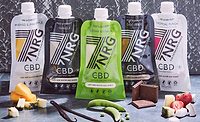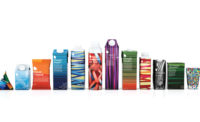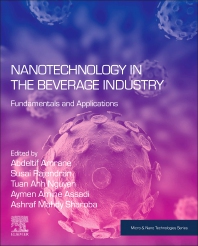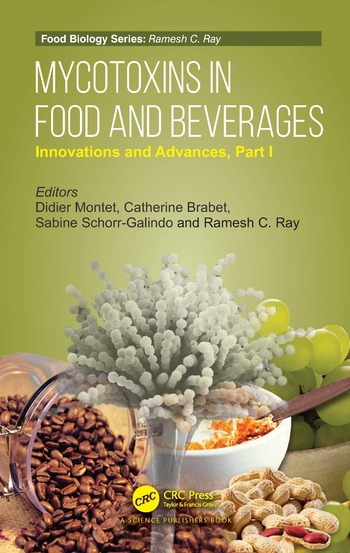Thinking outside the bag

Through the end of October, more than 300 new teas have launched in 2010, according to Mintel International’s Global New Products Database. Bagged teas led with the most new product introductions so far this year with 148 launches, and new ready-to-drink teas followed with 114 releases. Loose tea and tea pods were other popular formats.
Although growth of the tea category is booming, the popularity of tea ingredients and flavors has spread across beverage categories.
“Tea has everything you could ask for: good taste, loads of health and wellness goodies and it works well with other ingredients and flavors,” says Gary Vorsheim, director of extract sales at Martin Bauer Inc., Secaucus, N.J. “As we all have heard many times, tea is the second most popular beverage in the world, after water. Tea and its many uses in beverages in the U.S. has finally caught up with its global reputation.”
Another reason why tea is being used more in beverages is how easy it is to use tea as an ingredient.
“The need to be a tea expert and to have the capabilities to procure and brew tea has faded away as tea extracts and essences have become more advanced in the last 10 years,” Vorsheim says. “Using high-quality tea extracts and essences removes the complications associated with formulating a beverage containing tea, allowing the developers to focus on the final taste and not the complications of working with tea.”
J. Patrick O’Keefe, president of Finlay Tea Solutions U.S. Inc., Florham Park, N.J., agrees that during the past few decades many ready-to-drink (RTD) beverage companies discovered what an easy-to-use ingredient tea is and have been exploring this ever since.
“As consumers move toward healthier lifestyles, foods and beverages that meet this demand continue to grow,” he says. “Consumers are finding tea is a perfect combination of refreshing and great tasting while meeting the expectations of a natural, healthy alternative to some carbonated soft drinks.”
With the attention to tea’s antioxidants emerging in the mid ‘90s, tea has hit on a health and wellness hot spot, says Walter Postelwait, vice president of marketing and sales at BI Nutraceuticals, Long Beach, Calif.
“It’s zero calories, if you don’t sweeten it,” he explains. “It’s known to have high antioxidants, EGCG [epigallocatechin gallate], catechins, polyphenols and so forth. Third, it’s got the energy kick; it’s got caffeine. Fourth, it’s all natural.”
Tea’s natural benefits play a large role in the ingredient’s success, says Jason Crandall, president of Amelia Bay, Alpharetta, Ga. “There are a lot of products out there right now that report all kinds of vitamin content, antioxidants and ingredients like that, but it’s a mixture of flavors and different powder ingredients from different countries, and this is just tea,” he says. “It’s a natural product, full of good stuff and people are used to it.”
In addition to tea’s natural and healthy qualities, the familiarity of tea with consumers also helps its reception in new beverages.
“Tea is probably one of the more accepted ingredients and flavors,” says Paul Harrison, vice president of sales and business development at Sensus LLC, Hamilton, Ohio. “What I think is driving tea’s push are consumers looking for healthier alternatives in the market.”
Growing use
Although tea has been around for a long time and it is generally liked for its aromatic, refreshing character, the recent surge in tea interest in the United States reflects a general trend away from sweet drinks and toward more adult still beverages, says Michael Britten-Kelly, natural products manager at Treatt USA, Lakeland, Fla. Beverage producers see the tea category as a growth segment, and the result is a profusion of new offerings that keep consumer interest growing, he says.
RTD iced tea has been available for decades, but has exploded on the scene during the past decade or so, driven by its healthy halo, naturally refreshing characteristics and market vitality in terms of an almost endless combination of tea types, flavors, caloric levels and added fortifications, says Suzanne Niekrasz, director of marketing communications at Robertet Flavors Inc., Piscataway, N.J.
“It can be still, sparkling, black, green, white, herbal or even a combination of types in one bottle,” she says. “It’s certainly not a static beverage and offers a world of flavors and experiences in a bottle, bringing excitement to the category and driving continued positive sales growth.”
Refrigerated RTD teas from local dairy companies also have benefited from tea’s growing popularity, Niekrasz says. “Once limited primarily to East Coast markets, we’re seeing increased interest and activity in the refrigerated tea category, particularly in the Midwest and the South,” she says. “Meanwhile, national refrigerated RTD brands are now available in many areas of the country [and combined] with private label brands are leading the category. … For many consumers of these teas, it’s an everyday beverage, and it continues to attract new customers and contributes to the overall growth of the category.”
Black tea is still by far the most popular tea variety being used in North America. Green tea has seen tremendous growth due to the positive health reports and studies that have been published in recent years, Finlay Tea Solutions’ O’Keefe says.
Although green tea imports are about one fifth of the volume of black tea products, in the past five years the volume of green tea imports has grown at an average of 15 percent a year as compared with about 8 percent for the tea category as a whole, says Treatt’s Britten-Kelly. Americans, though, do not seem to like the strong fishy flavor of traditional green teas as they are consumed in China and Japan, he says.
“In the U.S., green teas are usually consumed as an iced tea beverage, mild in aroma and typically paired with compatible flavors,” Britten-Kelly says.
Tea suppliers also are seeing strong interest in oolong or white tea, but the variety has not grown as quickly as green tea.
“While a few years ago white tea was thought to be the next big boom for the RTD market, it has not been able to capture the attention of the consumer and has remained as a specialty tea rather than a mainstream tea like black and green,” Martin Bauer’s Vorsheim says.
Although Martin Bauer does see specialty products using Darjeeling, Lapsang, Keemun, sencha, rooibos and numerous other teas from around the world, the bulk of the U.S. market is focused on black and green leaf teas and extracts, he says.
“As the specialty tea market continues to grow and more consumers start to appreciate the various tastes associated with origin and specialty teas, we will slowly start to see these tea types being used by major beverage companies,” he says.
Yerba maté is another tea variety that BI Nutraceuticals sees gaining attention. “We think it will eventually get to the size of green tea,” Postelwait says. Japanese sencha, primarily used for its benefits to digestion, also is growing, he says.
Specific geographic varieties, estate grown, organic and Fair Trade teas also are growing in demand, says Tony Moore, chief flavorist at Flavor Producers Midwest Laboratory, Cincinnati. One U.S. regional tea, Southern style or sweet tea, is now offered nationally, for instance, at McDonald’s, Robertet’s Niekrasz says.
“Consumers seem to be more and more interested in understanding where the tea originates from, how it is processed and the culture of the region the tea comes from,” Finlay Tea Solutions’ O’Keefe says. “Consumers seem to have a connection with tea, almost a romance, if you will, that does not seem to exist in many other beverages.”
Flavored teas
Basic sweetened tea products tend to be the most popular sellers in the United States, but beverage-makers are using flavors to differentiate their products in the crowded tea sector.
“Straight teas are becoming more big-volume players like water,” BI Nutraceuticals’ Postelwait says. “If you look at the private label industry, or at Trader Joe’s, they have their own straight teas. The new entries people bring when they try to expand their brands have really got to lead on flavors and other functional ingredients and fusions of other types to really gain a foothold or a niche within the market.”
Traditional flavors, such as lemon, peach and raspberry followed by green tea with ginseng and honey, remain some of the top-selling tea flavors, Amelia Bay’s Crandall says. Green teas often are paired with citrus, mint, honey, ginseng and ginger, Treatt’s Britten-Kelly says.
New berry flavor entries, such as blueberries and blackberries, also are gaining flavor, Postelwait says, along with superfruit flavors and ingredients, such as pomegranate, cranberry, acai, maqui berry, goji berry and lychee.
“What they are trying to do is piggy back onto the health and wellness concept of tea and utilizing some flavors that just reinforce that,” he says.
Sensus’ Harrison also sees companies trying to extend tea’s healthy halo by adding ingredients such as chamomile, hibiscus, lavender and jasmine. “We’re seeing requests for mainstream flavors and then flavors that move into the tea-plus category,” he says.
In addition, the use of tea with juices and herbal extracts continues to evolve, Martin Bauer’s Vorsheim says. Other recent trends from beverage-makers combine tea with lemonade and blend black and green teas, Finlay Tea Solutions’ O’Keefe says.
The most popular recent flavor combinations include using two or more flavors in a new product launch, such as honey-mint and acai-blueberry-pomegranate, Robertet’s Niekrasz says.
“In addition to being very refreshing and tasty in their own right, offering a more complex flavor combination in tea is also an effective marketing tool, as they help differentiate a product among crowded shelves and can provide consumers with a bit of adventure and experimentation through the use of less common or expected flavor profiles,” she says.
Recent product development also has focused on creating low- and no-calorie teas using natural sweeteners, such as sugar, honey, agave syrup and stevia, Niekrasz says.
Tea innovations
Virtually all beverage categories have used tea in one way or another, from carbonated soft drinks to wine and liquor, Vorsheim says. By far, the largest use segments for tea as an ingredient would be the tea category itself followed by energy drinks, he says.
“The future for tea in all categories is huge, and as more formulators and marketers think outside the bag - tea bag that is - the more products you will see with higher levels of tea that will provide real value to the bodies of the consuming public,” Vorsheim says.
Several tea suppliers offer tea polyphenols for beverages and other products that are not marketed as tea products. As such, tea ingredients have permeated past the beverage aisles and into baked goods, seasonings, lotions, cosmetics and more, which proves how pervasive tea is in consumers’ lives, O’Keefe says.
“Most of the innovations we have seen have been focused on ways to make tea more accessible to the consumer,” he says. “This includes new varieties of RTD products, easier and faster brewing methods for in-home use and more convenient delivery for food service applications.”
Treatt has seen a steady growth in single-serving pouches of liquid tea concentrates. “These are more convenient than brewing tea from the leaf, and give a more authentic flavor than powdered teas,” Britten-Kelly says.
Flavor Producers recently developed Trü Brüz tea products that include standardized black, green, white and Darjeeling flavor profiles in liquid and water soluble essence, extract and with other natural flavors (WONF) forms. The tea essences are colorless and contain no nutrients and are helpful in contributing fresh brewed top notes to beverages, Moore says.
Trü Brüz tea extracts contain the natural coloring and nutrients contributed from the extraction of the tea leaves and are helpful in providing fresh brewed mouthfeel, base and middle flavor notes to beverages. Its tea WONF flavors are blends of tea essences, extracts and other flavors and can be customized to contribute balanced brewed tea profiles with desired additional flavors to any beverage, Moore says. BI
Related Links:
Category Focus: Healthy preferences boost tea sales
Category Focus: Health trends dominate juice innovations
Beverage R&D: Natural colors develop opportunities
Looking for a reprint of this article?
From high-res PDFs to custom plaques, order your copy today!








